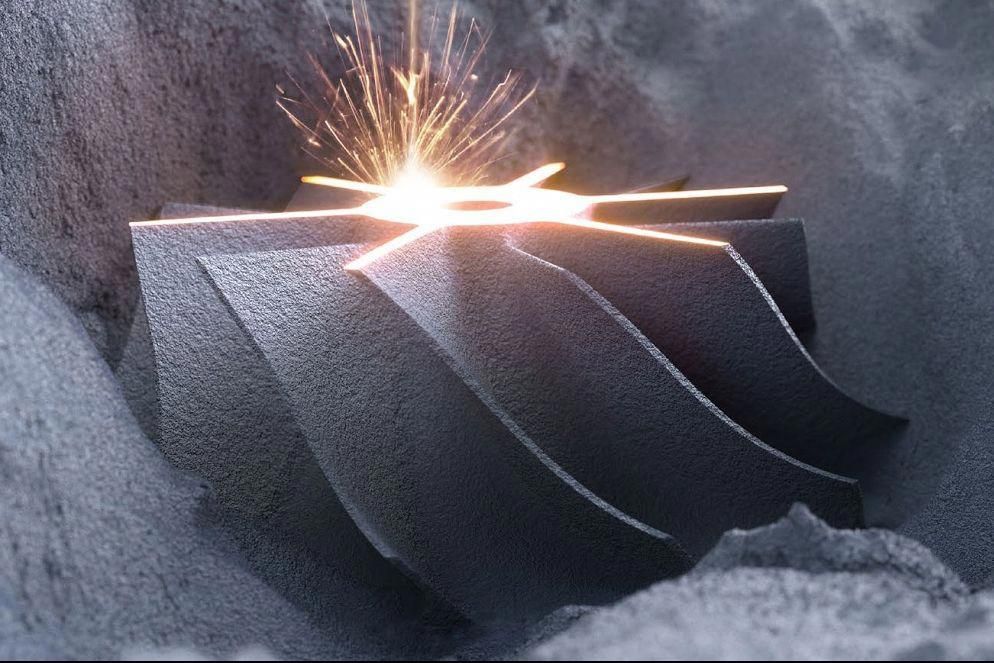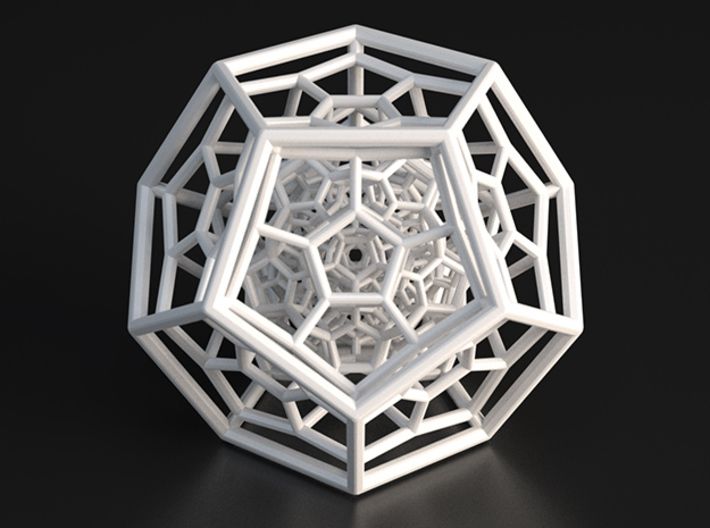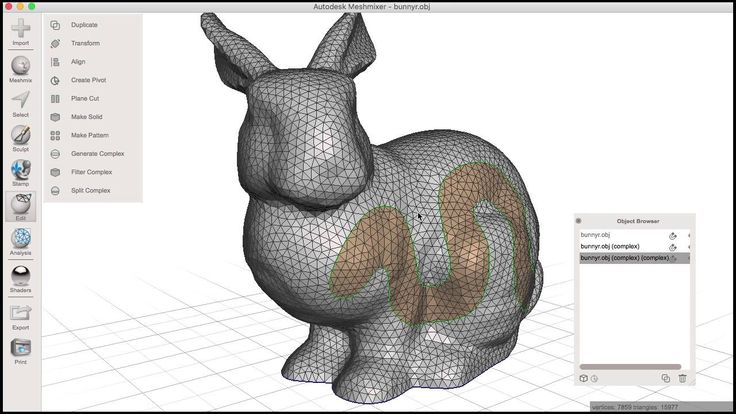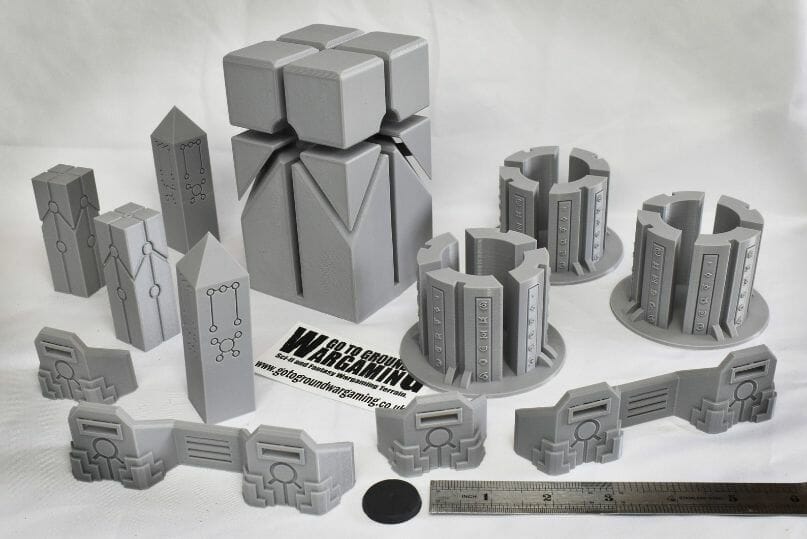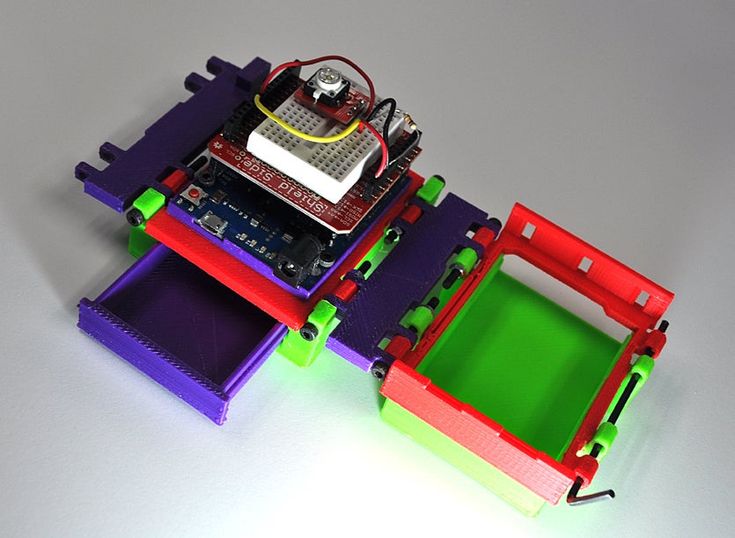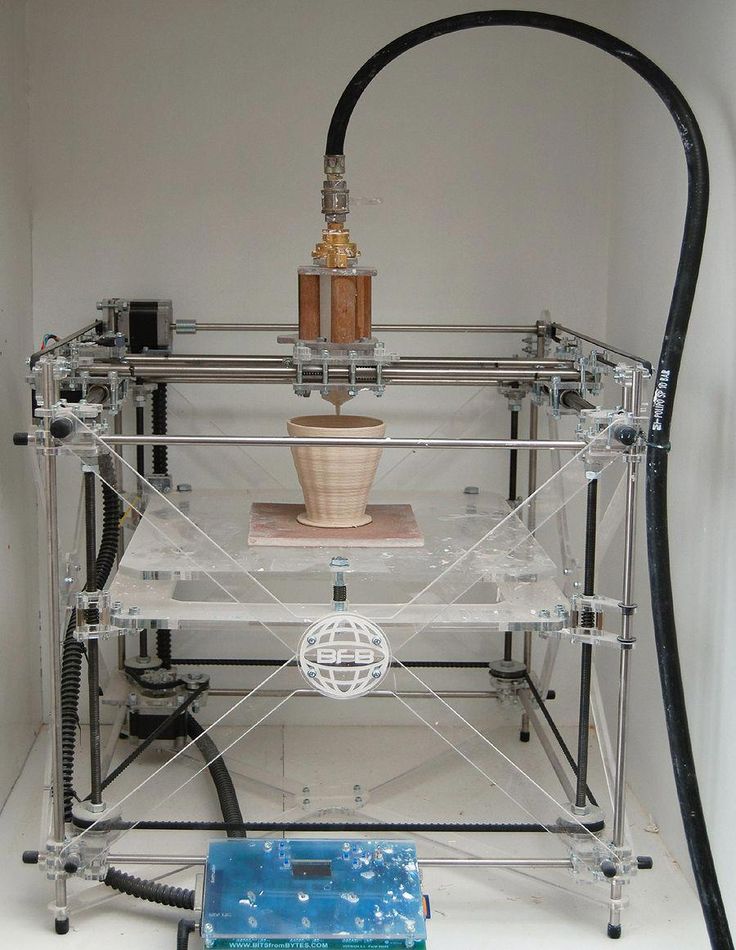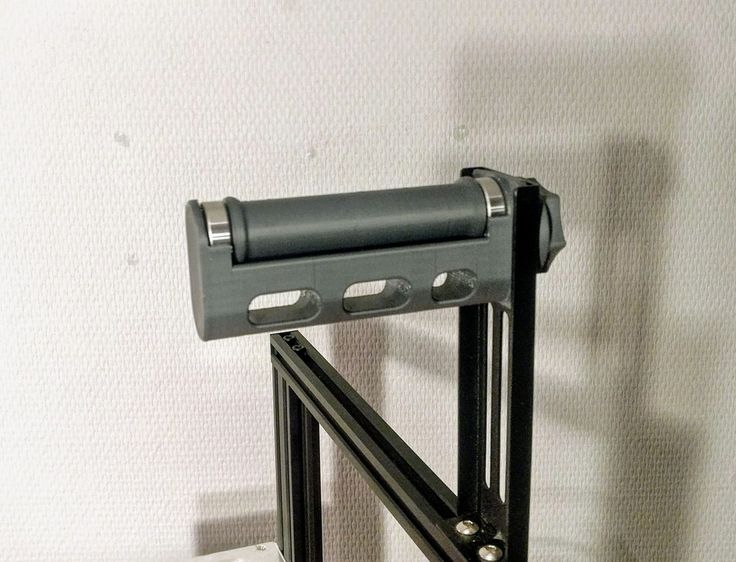Best 3d printer slicer
What Is the Best 3D Printer Slicer in 2022?
The process of 3D printing comprises three essential components: the 3D printer, the 3D model, and the slicing software for 3D printing. If you're new to 3D printing, a 3D printer slicer, or slicer, is software that acts as the middleman between the 3D printer and the 3D model.
3D printer slicers convert 3D models (like STL) into a format (like G-code) that 3D printers understand and can trace to create a print. The G-code file contains a set of instructions that tell the 3D printer what to do and how to do it.
This article covers some of the best 3D printer slicer software. But first, let's look at the characteristics of a good slicer.
What Are the Qualities of Good 3D Printer Slicer Software?
To be considered great, there are some features an industry-standard slicer should have. Here are the main variables to consider when searching for the best 3D slicer.
1. Ease of Use
There's no point in having great and advanced features if no one can find and use them. An ideal slicer should have a user-friendly interface and straightforward guides.
2. Preview
A good slicer should provide estimates on the printing time, how much material is needed, and how much is left. The estimations should be as accurate as possible.
3. STL Import Speed
You don't want to waste time waiting for your 3D printer files to display. Any good 3D slicer should quickly import STL files (or any other 3D printer model), no matter the size or complexity of the files.
4. STL Repairing
If your file has errors that could affect the print, a good 3D slicer software will alert you and fix them if necessary. This helps prevent wasteful reprints.
5. Slicer Supports
A good slicer should automatically generate supports. This will ensure that your final print is more precise and accurate, especially over wide-angle printing.
6. Cost
There are many great free programs, so if the 3D printer slicer is paid, it should offer significant advantages over the free options.
The Best 3D Printing Slicer Software
There are many slicing software, some with unique features and others compatible only with specific platforms. To help you choose the right software, here's a list of the top 3D printer slicer software, both free and paid.
1. Cura
Cura is a free and popular open-source slicer and is our top choice for the best 3D printer slicer. The software was developed by Ultimaker and was meant for use with their 3D printers.
The 3D slicer suits all users, from beginners to expert users in various industries. It's easy to use, has a fast graphical user interface, and gets frequent updates for a better user experience. It also has a huge resource library and a large active user community.
Cura supports various 3D printers and is compatible with computers running on macOS, Windows, and Linux. It also integrates with several plugins to enhance your workflow and CAD software like Autodesk Inventor and SolidWorks.
The software works with file formats like STL, OBJ, X3D, and 3MF, showing a tool path, estimated printing time, and material usage. It also works with many image formats, including JPG, PNG, GIF, and BMP.
Download: Cura for Windows, Mac, and Linux (Free)
2. ideaMaker
ideaMaker is another free 3D printing slicer, often preferred for its versatility and user-friendliness. The software was developed by Raise 3D, primarily for their lineup of 3D printers, but it's also compatible with most FDM 3D printers.
The slicer has a simple interface and a smooth editing process and is a great choice for beginners and intermediate users looking for a straightforward slicer. ideaMaker is relatively fast and requires a few clicks to prepare your STL, 3MF, or OBJ files for print.
ideaMaker allows you to remotely monitor and control the printer and track multiple printing profiles. The software also includes features like auto-layout for multiple files, automatic support generation, and repair for faulty models.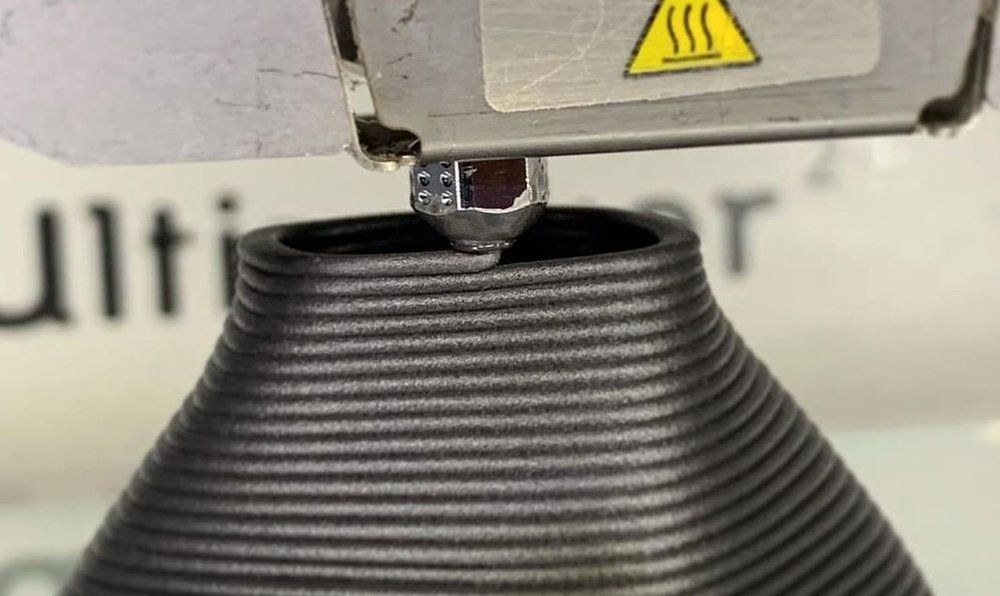
Download: ideaMaker for Windows, Mac, and Linux (Free)
3. Simplify3D
Simplify3D is powerful 3D slicer software with easy-to-use advanced features. The software is suitable for experienced users who need a 3D slicer for high-quality printing.
The slicer works with almost all 3D printers and is compatible with Windows, macOS, and Linux. With Simplify3D, you can import, edit, and repair 3D models. You can also import OBJ, 3MF, or STL files very fast.
Simplify3D enables you to easily switch between multiple machines and monitor several printing processes at once. You also can access great pre-print simulations that allow you to pinpoint errors for fixing.
There are many printer settings to give you maximum control of the printing process. You can customize settings for extruders, infill 3D settings, temperature and cooling, and layer control. You can edit raw G-codes as well.
Simplify3D has many tutorials and a great support community.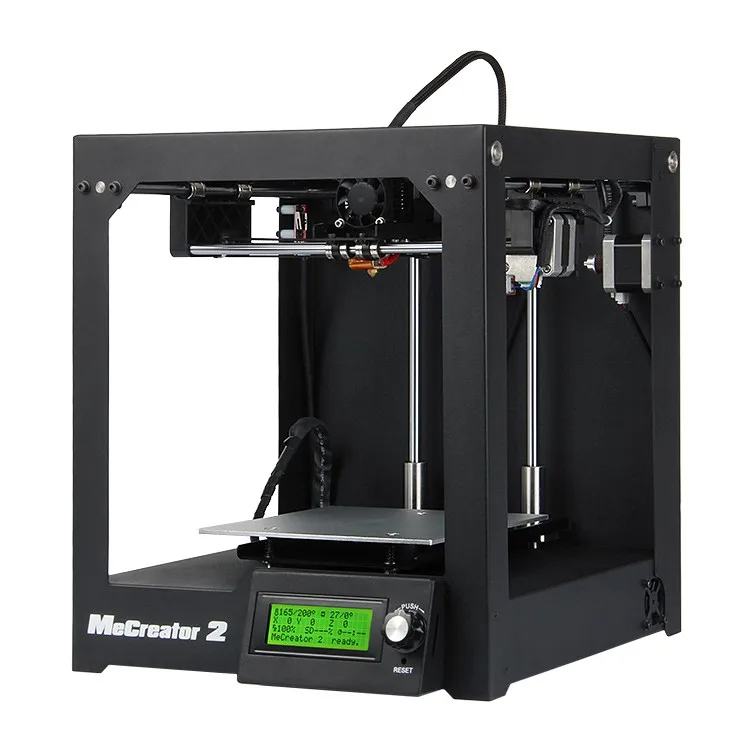 The software costs a one-time payment fee of $149. You'll, however, need to pay some fee for upgrades.
The software costs a one-time payment fee of $149. You'll, however, need to pay some fee for upgrades.
Download: Simplify3D for Windows, Mac, and Linux (Subscription required; free trial available)
4. Slic3r
Slic3r is an open-source 3D printer slicer best known for its unique and cutting-edge features updated now and then. The software has many advanced features, making it suitable for experts looking for a free 3D slicer.
The software is compatible with many 3D printers, including Ultimaker, Makerbot, and MakerGear. It also works with files like OBJ and STL to quickly generate G-code.
Slic3r has a wide range of intuitive features for editing 3D models in real-time. Its features include bridge detection, micro layering, honeycomb infill, command line slicing, mesh cutting, and sequential printing.
Download: Slic3r for Windows, Mac, and Linux (Free)
5. Netfabb
Autodesk-owned Netfabb is an advanced 3D slicing software and is easily the best paid 3D slicer for professionals. The software is popular with automotive, aerospace, and heavy industry engineers.
The software is popular with automotive, aerospace, and heavy industry engineers.
The 3D slicer includes Fusion 360, and we've put together our top tips for Fusion 360 beginners if you're new to this.
Netfabb also integrates with several 3D printers, including Aconity3D, Mimaki, and EOS. The software allows you to apply additive manufacturing to a part of or entire model.
Additive manufacturing allows you to manufacture unique components, like lightweight lattice structures. You can, for example, create hollow products, thus saving on weight.
Netfabb includes features that allow you to analyze, repair, and edit STL files before slicing. One notable feature is the simulation toolkit designed to ensure components print correctly and perform as expected. The simulation tools, for instance, can predict how metal additive manufacturing parts will warp, helping reduce build failures.
With the software, you can import models from various CAD systems and quickly analyze files for printability, estimated material usage, print time, and possible cost. If errors are detected, you can use the software's repair tools to fix them.
If errors are detected, you can use the software's repair tools to fix them.
Note that Netfabb comes in several licensing options: Standard, Premium, Ultimate, and Simulation, each with its unique features. The annual price is $230 for Standard and $4,635 for Premium.
Download: Netfabb Premium for Windows (From $230; free trial available)
Create Great Printables With the Best 3D Slicer Software
Slicers are among the most important tools in 3D printing. Using the right 3D slicer software can significantly improve the quality of your 3D output.
But with so many slicers in use, it can be hard to know which one best fits your needs. This article covers some of the top 3D printing slicer software. Hopefully, it will help you find the right match for your printing needs.
10 Best Slicer Software for 3D Printing
The first and most critical step in printing a 3D item is running its computer model through a slicing software. 3D printing slicer software helps create instructions for 3D printers to follow. The part’s final quality depends heavily on these precise digital instructions. Build faults ruin printed prototypes. Proper employment of a good slicer is the key to minimizing them.
3D printing slicer software helps create instructions for 3D printers to follow. The part’s final quality depends heavily on these precise digital instructions. Build faults ruin printed prototypes. Proper employment of a good slicer is the key to minimizing them.
This article will help you choose the 3D printer slicer to fit your needs. It will also define this type of computer program, discuss the 10 best 3D printing slicer software packages available, outline how they work, and provide tips on how to choose a slicer software. The price for each is listed along with advantages and disadvantages.
1. Cura (Best Free 3D Slicer Software)
Cura 3D printing slicer software is a free and very common option. It handles 3D formats plus image formats for direct printing from 2D. The table below summarizes the advantages and disadvantages, and the cost of Cura:
| Advantages | Disadvantages | Cost |
|---|---|---|
Advantages Intuitive UI Fast processing Cura tree support | Disadvantages Lacks advanced features | Cost Free |
Table 1. Cura Information Summary
Cura Information Summary
2. OctoPrint (3D Printer Host for Remote Printing & Also a 3D Printer Slicer)
The OctoPrint slicer is not just a 3D printing slicer software, but also a web interface for 3D printers. It functions like a task manager, allowing you to control the print remotely. The table below summarizes the advantages, disadvantages, and the cost of OctoPrint:
| Advantages | Disadvantages | Cost |
|---|---|---|
Advantages Remote host for multiple printers | Disadvantages Internet security issues | Cost $143 |
Table 2. OctoPrint Information Summary
3. Prusa Slicer (Best 3D Printer Software For Prusa Printer Owners)
Prusa makes a printer kit, so their 3D printing slicer software is optimized for their machines. Prusa 3D Slicer can also drive many other manufacturers' printers, with settings for 60+ materials. Many users prefer PrusaSlicer vs Cura 3D printer slicer software. The table below summarizes the advantages, disadvantages, and cost of PrusaSlicer:
The table below summarizes the advantages, disadvantages, and cost of PrusaSlicer:
| Advantages | Disadvantages | Cost |
|---|---|---|
Advantages Drives most printers Easy to learn | Disadvantages Lacks advanced tools | Cost Free |
Table 3. PrusaSlicer Information Summary
4. Simplify3D (Best 3D Slicer For Experienced Makers)
Simplify3D has advanced features for experienced users. It works with most 3D printers and includes tools that help you find and fix file errors and run several prints at once. The table below summarizes the advantages, disadvantages, and the cost of Simplify3D:
| Advantages | Disadvantages | Cost |
|---|---|---|
Advantages Tools for advanced users Build simulations | Disadvantages Harder to learn | Cost $149 |
Table 4. Simplify3D Information Summary
Simplify3D Information Summary
5. Slic3r (Best Open Source 3D Slicer)
Slic3r is the leading open-source 3D printing slicer software and offers cutting-edge capabilities. It has advanced features, making it popular among professionals. The table below summarizes the advantages, disadvantages, and cost of Slic3r:
| Advantages | Disadvantages | Cost |
|---|---|---|
Advantages Professional UI Good tools Accessible settings | Disadvantages Requires familiarization | Cost Free |
Table 5. Slic3r Information Summary
6. Repetier (Great 3D Slicer For Remote 3D Printing)
Repetier is loaded onto Raspberry Pi units used to control printers. It includes tools like Repetier-Server for remote monitoring that enhance the 3D slicer’s functionality. The table below summarizes the advantages, disadvantages, and cost of Repetier:
| Advantages | Disadvantages | Cost |
|---|---|---|
Advantages Remote access Multiple slicers and printers | Disadvantages Difficult to use No repairs for input files | Cost Free |
Table 6.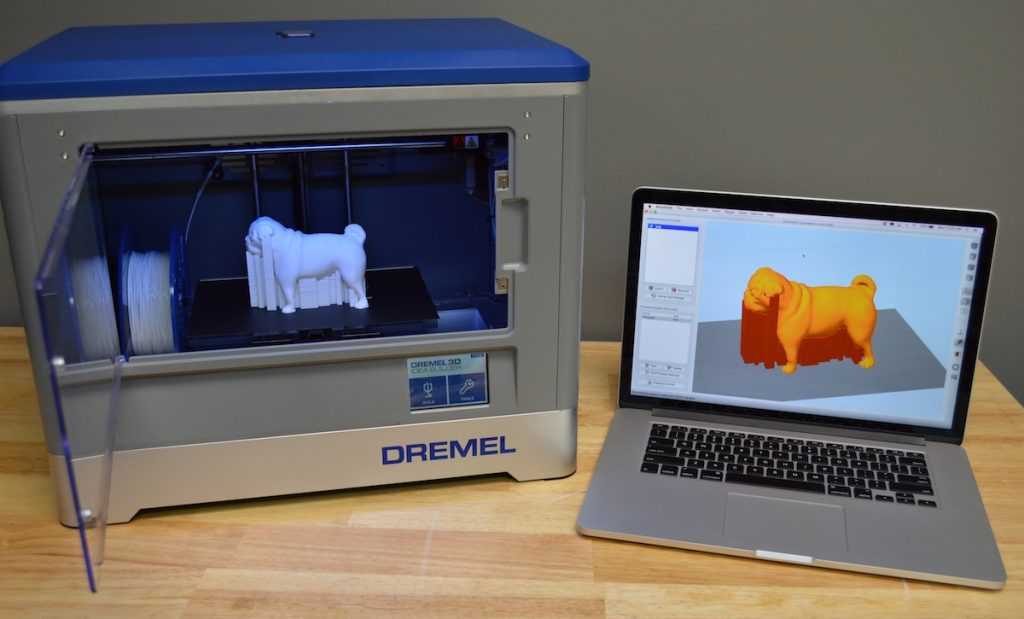 Repetier Information Summary
Repetier Information Summary
7. SelfCAD (Paid with Free Option)
SelfCAD is a larger CAD tool that contains a 3D printing slicer software. The SelfCAD slicer is derived from Cura software. SelfCAD has capable evaluation and repair tools. The table below summarizes the advantages, disadvantages, and costs of SelfCAD:
| Advantages | Disadvantages | Cost |
|---|---|---|
Advantages Easy customization Remote access Advanced tools | Disadvantages Similar to Cura (which is free) Lacks advanced features | Cost $14.99 per month or one-time $599 fee |
Table 7. SelfCAD Information Summary
8. KISSlicer (Best 3D Slicer for Experts)
KISSlicer is 3D printing slicer software tailored for experts. It’s an intricate system with fine capabilities for particularly advanced users. The table below summarizes the advantages, disadvantages, and costs of KISSlicer:
| Advantages | Disadvantages | Cost |
|---|---|---|
Advantages Powerful tools for advanced users | Disadvantages Complex user interface | Cost Free basic Up to $82 per year for full capabilities |
Table 8. KISSlicer Information Summary
KISSlicer Information Summary
9. Tinkerine Suite (Best 3D Slicer For Education / Schools / Beginners)
Tinkerine makes educational tools. Unsurprisingly, then, their 3D printing slicer software is easy to learn. The free slicer software is common in schools. The table below summarizes the advantages, disadvantages, and costs of Tinkerine Suite:
| Advantages | Disadvantages | Cost |
|---|---|---|
Advantages Very easy to use | Disadvantages Lacks advanced capabilities | Cost Free basic Up to $82 per year |
Table 9. Tinkerine Suite Information Summary
10. Netfabb (Professional 3D Slicer for Metal 3D Printing)
Netfabb has moved from a free to a paid model. It is the leader in high-end slicer programs aimed at professionals. The table below summarizes the advantages, disadvantages, and costs of Netfabb:
| Advantages | Disadvantages | Cost |
|---|---|---|
Advantages Powerful analysis, repair, editing, simulations, and warping toolsets | Disadvantages Not easy to learn | Cost $230 to $4,635 per year |
Table 10. Netfabb Information Summary
Netfabb Information Summary
What is a 3D Slicer in 3D Printing?
3D printing slicer software converts 3D models into printer instructions. These instructions tell the printer head where to go, how to move there, and what to do when it arrives. A slicer software “slices” digital models into layers to be printed, plus controls print parameters. It is generally installed on your computer, but online slicers are also available.
For more information, see our article on Everything You Need to Know About 3D Printing.
What Features Should a Good 3D Slicer Have?
Any capable 3D slicer software needs to optimize these features:
- Speed and accuracy - Efficiently convert printer instructions.
- Repairs and warnings - An ability to flag errors and repair them.
- Ease of use - Intuitive user interface
- File import and processing rate - Quick accessing and processing of files.

- Effective support - Generates appropriate support structures.
- Print process updates - Calculate and inform users of print time and material/filament needs.
What is the Most Widely Used 3D Slicer Software?
Cura is the most common 3D printing slicer software. By many measures, it is generally accepted as the best and has a wide user community.
Which 3D Slicer Software is the Most Expensive?
Netfabb is the most expensive software, though the price varies depending on the licensing option.
How Can I Get 3D Slicer Software for Free?
Free 3D printing slicer software packages are available online and can be downloaded anytime. Below are the steps to get free 3D Slicing Software:
- Read 3D slicer reviews
- Choose the best slicer software for your needs.
- Visit the appropriate website:
- Follow the installation and setup guides and you’re ready to slice.
How Much Does 3D Slicing Software Cost?
3D printing slicer software cost varies depending on the brand and the features. Prices range from free up to several thousand dollars per year.
Prices range from free up to several thousand dollars per year.
What Is the 3D Printing Slicer Setting?
3D slicer software precisely controls the printer operation, so several variables must be set. Users tend to want more control as they gain experience. Any capable 3D slicer software will offer the user control over a variety of settings including:
- Print speed
- Layer thickness
- Shell
- Upper/lower thickness
- Fill density
- Support
- Spiralization
- Retraction
These settings can overlap so changes can have unexpected consequences - single changes are usually the way to go while learning.
How Do I Set Up 3D Slicing Software?
The setup process for 3D slicing software is generally similar across all 3D slicer software packages and is outlined below:
- Upload 3D files into the software using a graphical representation of the product.
- Set part(s) orientation
- Apply the user-controlled settings
- Run a build simulation to assess faults
- Send the job to the printer
How Does 3D Printing Slicing Work?
3D slicer software converts models into instructions suited to the 3D printer. It takes a designer's 3D model and renders it into instructions for the printer in the form of G-code, the CNC machine language.
It takes a designer's 3D model and renders it into instructions for the printer in the form of G-code, the CNC machine language.
Is a Slicer Required to 3D Print?
All printers require some form of 3D printing slicer software. Printers operate in a simplified and very rigid way which requires this intermediate translation.
Is Slic3r Better Than Cura?
There is a wide range of features to consider when choosing between Slice3r and Cura software. However, the relative benefits of the two packages are easy to evaluate. The table below compares the two slicers’ features:
| Features | Cura | Slic3r |
|---|---|---|
Features User interface | Cura Intuitive | Slic3r Complex |
Features Positioning parts in a build | Cura Intuitive | Slic3r Complex |
Features Model information | Cura Intuitive | Slic3r Complex |
Features Printer profiles | Cura Select from a preinstalled list | Slic3r User entered from printer manufacturer data |
Features Speed of processing | Cura Fast | Slic3r Up to 5x slower |
Features Variable layering | Cura No | Slic3r Yes |
Features Conditional G-code | Cura No | Slic3r Yes |
Selection depends on the experience of the user. Slic3r is more powerful for advanced users but requires deep knowledge. Cura slicer software is user-friendly.
Slic3r is more powerful for advanced users but requires deep knowledge. Cura slicer software is user-friendly.
Whatever your experience level or the usage intensity you expect, there is a 3D slicer that will suit your needs.
Summary
This article examined 10 of the common slicer software packages that are available and provided information to assist with making a selection.
Reach out to a Xometry representative today if you need help choosing the best 3D printing slicing software. Xometry offers a full range of 3D printing services for your project needs. Visit our Instant Quote Engine to get a free, no-obligation quote in minutes.
Disclaimer
The content appearing on this webpage is for informational purposes only. Xometry makes no representation or warranty of any kind, be it expressed or implied, as to the accuracy, completeness, or validity of the information. Any performance parameters, geometric tolerances, specific design features, quality and types of materials, or processes should not be inferred to represent what will be delivered by third-party suppliers or manufacturers through Xometry’s network. Buyers seeking quotes for parts are responsible for defining the specific requirements for those parts. Please refer to our terms and conditions for more information.
Buyers seeking quotes for parts are responsible for defining the specific requirements for those parts. Please refer to our terms and conditions for more information.
Team Xometry
This article was written by various Xometry contributors. Xometry is a leading resource on manufacturing with CNC machining, sheet metal fabrication, 3D printing, injection molding, urethane casting, and more.
Read Article - Top Best Free 3D Printing Slicer Software in 2022
Below is a list of the best free 3D slicers in 2022 - software for converting 3D models into layers for 3D printing.
Cura
Cura is an open source slicing software created by Ultimaker for their 3D printers, but can also be considered a common standard as it is compatible with most other 3D printers. Its functionality can be easily extended with a large number of convenient plugins. Since this is one of the most popular and widely used 3D printer slicers on the market, there's a good chance that a profile for your 3D printer is already available in the software, allowing you to get started right away.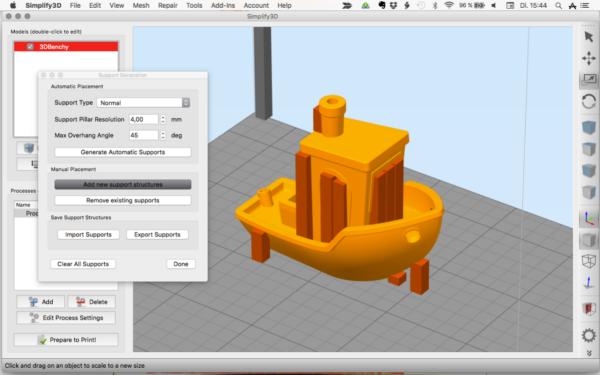 If this is not the case, you can download and import a third party profile.
If this is not the case, you can download and import a third party profile.
This 3D printing software is very easy to use and allows you to manage the most important 3D printing settings in a clear interface. Start with "Basic" mode for a quick start, where you can only reconfigure the most basic printer settings. If you need finer control over your print settings, switch to Advanced, Expert, or All for more settings. In these modes, Cura provides users with up to 400 customization options to suit your needs and get the best results.
This slicer is constantly updated and improved, new versions are constantly released, so you can be sure that you get the latest program. Recently, the new version of Cura 5.1 introduced settings for FDM metal printing.
You can also use Cura as a 3D printer remote control software, but the 3D printer must be connected to the PC during printing. Integration with CAD systems such as SolidWorks and Siemens NX makes the software valuable even in professional applications. But for the vast majority of home users, Cura is a simple and affordable 3D printing slicer.
But for the vast majority of home users, Cura is a simple and affordable 3D printing slicer.
In addition to ease of use, you can also find many educational resources on how to best use Cura's latest features, as well as a community forum on the Ultimaker website.
Cure download link.
Prusa Slicer
Prusa Research, the company behind the original Prusa 3D printers, has developed its own slicer, PrusaSlicer, based on Slic3r, an open source slicer. PrusaSlicer has gained a lot of popularity very quickly for a number of reasons: not only does it have a large list of Slic3r's adjustable settings, but it also has some handy features that the original software didn't have.
With a redesigned interface, built-in support for Prusa's own range of printers, and user-friendly settings for a range of common media, there are many improvements over the original software. Key features include customizable supports, support printing with different materials, and flexible layer height settings.
PrusaSlicer can be used to cut models for both FDM printers and photopolymer 3D printers. It has various modes allowing you to edit the settings depending on your experience, and the Expert mode opens up a huge list of customization possibilities. However, even simple profiles can work well in PrusaSlicer. There are fewer printer presets than some other popular slicers, but it's just as easy to set up or import custom settings.
Based on Slic3r, PrusaSlicer supports most of the original features and even accepts Slic3r configuration packages when importing profiles.
Link to download Prusa Slicer.
ideaMaker
Raise3D ideaMaker slicing software is optimized for the company's 3D printers, similar to how PrusaSlicer is optimized for original Prusa printers and Ultimaker Cura for Ultimaker hardware, but like other software, it also works well with third-party 3D printers.
The workflow and user interface is a bit more complex than Cura and PrusaSlicer, but it's worth a little digging and you'll have quick access to advanced per-layer settings and print modifiers, including the ability to texture models or brand your parts.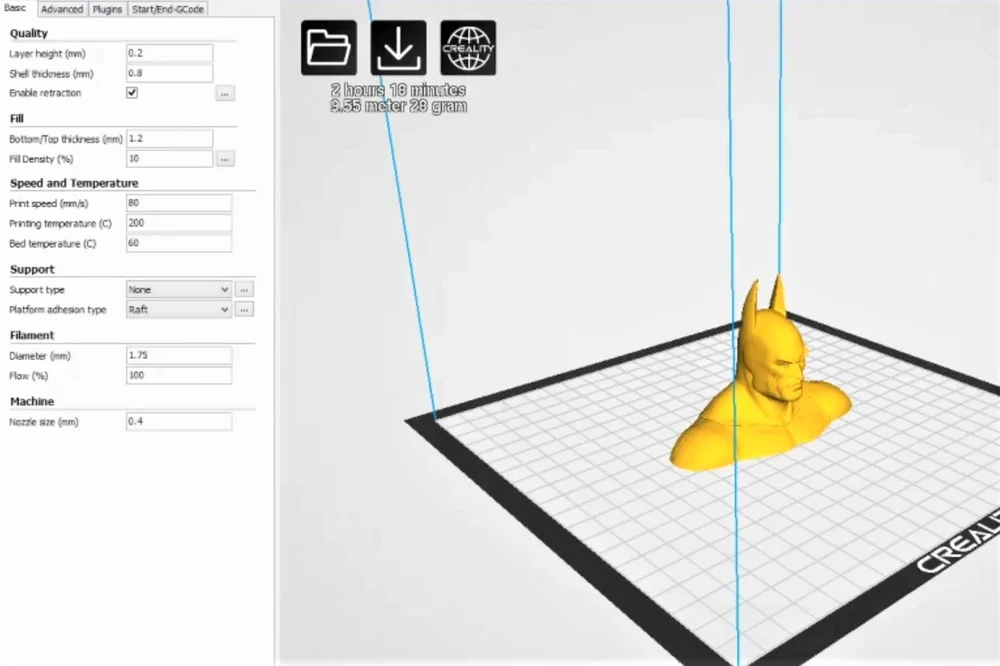
By connecting to Raise3D cloud services, you can download hundreds of community and Raise3D-created printer and media profiles for faster and better printing, or create your own library of settings and profiles.
Customizable supports, model splicing and mesh correction tools are all provided by ideaMaker, which allows you to get consistent print results every time. Print sequencing and built-in compatibility with OctoPrint are also additional features that improve print quality.
You can also switch between dark and light ideaMaker interface themes for a more comfortable slicer experience.
Download link for ideaMaker.
CHITUBOX Basic
Chances are if you're using a budget desktop 3D resin printer, it comes with CHITUBOX (now known as CHITUBOX Basic). The software is developed by CTB Systems, which also makes many of the motherboards and firmware for these printers (hence the company's default software is software that goes great with anything).
The main purpose of CHITUBOX Basic is cutting 3D models for printing on photopolymer 3D printers. With CHITUBOX Basic you get full control over printer settings as well as a large list of common and popular printer profiles and resins.
The most important element of preparation for photopolymer 3D printing is the orientation of the model and the setting of supports. Orientation is not the easiest - it does not have an automatic mode, but the generation of automatic support is quite reliable and in many cases gives good results. More fine-tuning may be required to properly support parts, but the support customization options are simple and intuitive.
Link to download CHITUBOX Basic.
Lychee Slicer
With a wide variety of 3D printer profiles and resins, the Lychee Slicer is an attractive third-party option for your model slicing needs. This, and being one of the most user-friendly and easy-to-use slicers, makes the Lychee Slicer an excellent multifunctional solution for desktop resin printers.
Automatic model orientation will help you get started preparing for 3D printing, but you can skip it and just hit the Magic button and let Lychee Slicer take care of everything. The results can sometimes be unpredictable, but when working with simple models, you will save time this way.
Some options are not available in the free version of Lychee Slicer, but this is not a problem. The free version is fully functional and has rich functionality.
Link to download Lychee Slicer.
Kiri:Moto
Written entirely to run in the browser, Kiri:Moto is a powerful tool that can be used to prepare models for 3D printing, laser engraving or CNC milling (the common factor here is that they are all exported via G-code) . The settings are simpler than locally installed slicers, but they provide most of what you would normally need, including z-axis retract settings.
There is complete freedom to add printers using a few simple parameters such as build area, G-code type, and number of extruders. In addition, there are necessary options for customizing and exporting G-code files.
In addition, there are necessary options for customizing and exporting G-code files.
Link to Kiri:Moto.
IceSL
IceSL is an amazing 3D printing software. This is not just a slicer, but also a 3D modeling tool. In the left window, you can edit your model directly using scripts in a language based on Lua.
On the right you will find a wide range of slicing settings. Beginner-friendly presets make cutting a model quick and easy. But once you open the advanced settings, you get a lot of cool features that the IceSL team has been developing over the years.
Most notable from the latest release are the progressive settings, which allow you to specify different print settings for different layers, with IceSL making incremental changes on its own. This means smooth transitions from high to low fill and from low to high, among other things.
Link to download IceSL.
Read more about 3D printing and its application in different areas in our blog, and also subscribe to our social networks.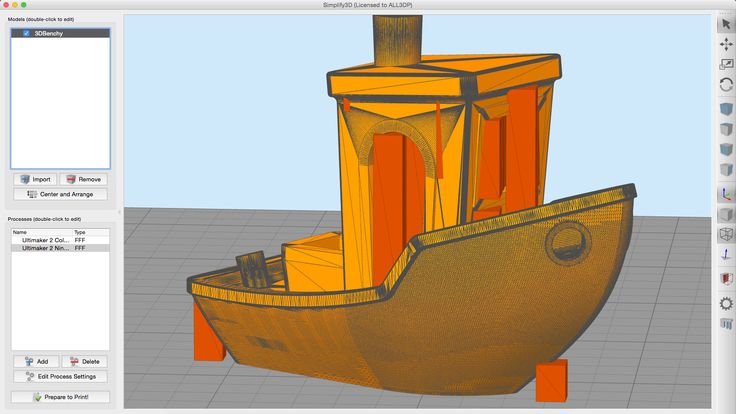
Best 3D Slicers for 3D Printers (2021)・Cults
3D printing is possible thanks to three main elements: 3D printer, 3D model and 3D cutting software. The latter, known as a "slicer", is the intermediary that prepares your chosen model before sending it to the 3D printer. There are many free and paid 3D programs on the market for users. This selection of the best slicers is designed to help you choose the one that best suits your needs.
Cura is the most widely used slicer on the market. The software was developed by Ultimaker, a leading manufacturer of FDM 3D printers. Its advantage is that it is open source, free and compatible with the vast majority of desktop 3D printers and with a computer running Windows, Mac or Linux systems.
Cura slicer works with many 3D formats such as STL, X2D, 3MF, OBJ as well as image formats such as BMP, PNG, GIF, JPG. Its accessible interface is suitable for both beginners and professionals. Its features include: outline display, material usage, and print time calculation. For more advanced users, there are third-party plugins.
For more advanced users, there are third-party plugins.
3DPrinterOS is a full-featured 3D slicer that can be accessed not only through a browser, but also through Windows or Mac. It is a cloud-based platform that has a slicing application, as well as a number of other functions required for 3D printing, such as repair.
Slicer gives you the ability to manage machine files in your company in a very simple way. The 3DPrintersOS platform includes three slicing apps: Cloud Slicer, Slicer 2, and Marketbot Slicer. It is also compatible with a wide range of printers.
IdeaMaker is a free 3D slicer that is often preferred for its convenience. It was released by Raise3D, a manufacturer of 3D printers. It is quite easy to use, just 4 clicks to start preparing various 3MF, OBJ and STL files. You can also customize the software to get much more advanced functionality.
IdeaMaker works with most FDM printers and with Windows, Mac or Linux operating systems. The software can also be used as a 3D printer control platform.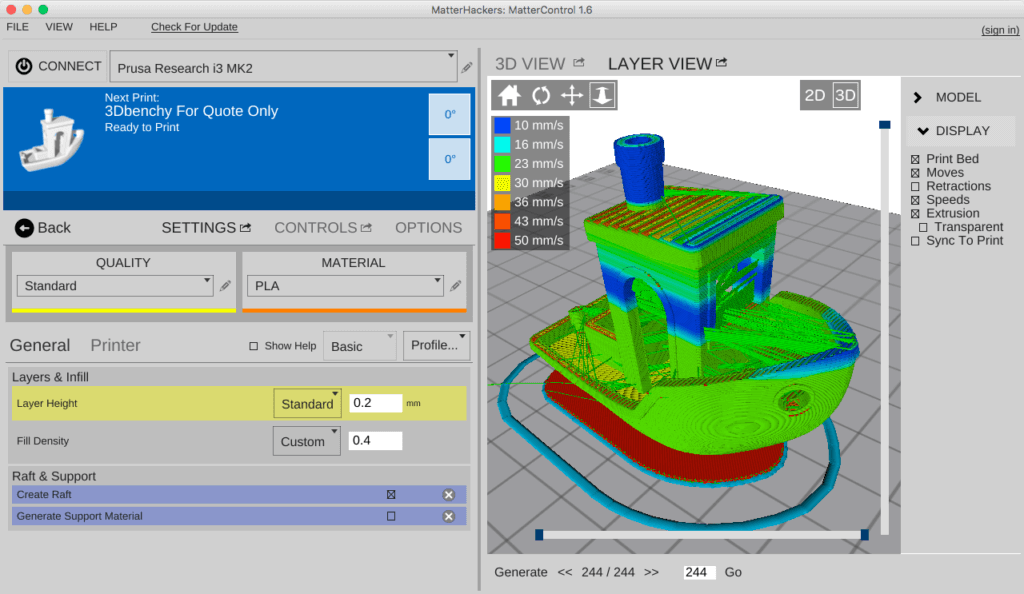 For example, it gives you the ability to monitor different print profiles, remotely manage a running print, and easily switch between print settings.
For example, it gives you the ability to monitor different print profiles, remotely manage a running print, and easily switch between print settings.
Keep it Simple Slicer or KISSlicer is a fast, cross-platform application that you can have on Windows, Mac, Linux or Raspberry Pi. Depending on the version you choose, its interface may be more complex.
You will find a free version, which is probably suitable for beginners, as well as a paid professional version. The latter has additional features such as dual extrusion 3D printing.
Compatible with Windows, Mac and Linux operating systems, Repetier-Host is a free and open source 3D cutting software widely used in the RepRap community. Slicer offers a complete solution. It supports up to 16 extruders and can work with multiple filaments and colors at the same time to give you an idea of the result before you start printing.
Repetier-Host includes 4 slicers (Skeinforge, CuraEngine, Slice3r, Slic3r Prusa Edition) but allows you to add the solution of your choice. Thus, the slicer is compatible with almost all FDM 3D printers. It has an interesting feature built in that allows you to download or duplicate all models that match your print tray and print them at the same time.
Thus, the slicer is compatible with almost all FDM 3D printers. It has an interesting feature built in that allows you to download or duplicate all models that match your print tray and print them at the same time.
Free and open source, OctoPrint is a 3D slicer and web interface for your 3D printer. It is compatible with Raspberry Pi, Windows, Mac, Linux operating systems and allows you to control all actions through a web browser or from other portable devices. Based on CuraEngine, OctoPrint cuts your files directly.
Astroprint is designed in a similar concept to OctoPrint. It is used in the browser and with Raspberry Pi and pcDuino systems. You have 3D cutting software and the ability to control your 3D printer from any device connected to the internet.
The 3D printing software has two modes. An easy mode where you can choose the material and quality before sending it to the 3D printer. In advanced mode, you can improve the settings for better results.
Simplify 3D is specially designed for professional users.


